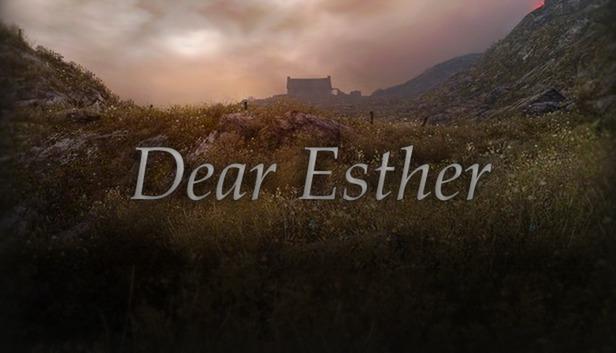
This week I played Dear Esther, a Windows/OS X/Xbox/PS4/iOS walking simulation game that was initially released by The Chinese Room in 2012. I decided to play on my Macbook which seemed to be a great decision in hindsight as the overall experience was really immersive and fun due to the size of the screen and ease of control. The game explores topics of death, loss, and loneliness. For such reason, the target audience is one that is more mature and old enough to handle its darker themes (12+). As a walking simulator, Dear Esther is single-player and the task of such player is to navigate/explore an isolated and desolate island of decrepit buildings and creepy lighting by walking around and listening to read-out-loud letters scattered around. There are four different parts/levels of the game which honestly alter the game experience so much when switching up the order they are played in. Anyway, now that the little introduction to my critical play has come to a close, let’s get into my game analysis!
In regards to game mechanics, there are minimal. As said previously, the only mechanic of the game is the player’s ability to wander around. When the player moves to new and specific places on the map, a man’s voice is prompted to read aloud letters written to his dead wife. As you encounter more and more of these letters, the mystery of the island is revealed. Though Dear Esther may only have one main mechanic of walking around, the game isn’t restrictive in my opinion, rather I feel like it makes the player feel free and more immersed. As you enter certain spaces, events around you are triggered (ex. flashlight turning on in dark spaces) and it makes you feel like you are in a world where your movement dictates your understanding of the world around you and the environment itself, paralleling our very own reality. For these reasons, when playing, I felt like I was living in the narrative without having to worry about working extra mechanics or ‘winning’ the game. This allowed me to really experience so many emotions and connect to the virtual world and its people. I feel like walking simulators get a lot of slack because they are ‘one-dimensional’ and not ‘true’ games, however, I think this is crazy. Walking simulators such as Dear Esther transforms the player into the main character, allowing them both to feel his grief and follow him on his journey to acceptance. In fact, Dear Esther did such a great job of immersing me in the narrative that I almost felt like I was intruding or trespassing in the narrator’s life.
The language, sound, story, and landscape evoked feelings of melancholy and sadness. Being someone who has personally lost multiple loved ones, for me, the game brought up many emotions for me. At many points, while playing I would almost dissociate and think about my own experiences and how they parallel the main character’s. Honestly, playing was rather therapeutic and I felt like the lack of mechanics really allowed me to fully explore my mind, the narrator’s mind, and the in-game world.

Formal Elements
- Players: Single-player!
- Objectives: To uncover the full story which is gradually revealed through letters the player encounters during gameplay.
- Outcomes: To get to the end of the story and come to peace.
- Procedures: Dear Esther is a narrative game! The game is split into chapters/levels that the player must play through in order to advance.
- Rules: The player is only able to move up, down, left, and right.
- Boundaries: The screen!
Type of Fun
Dear Esther provides its players with mainly three types of fun: Discovery, Narrative (obviously haha), and Sensation. Clearly, the core of this game is its immersion and storytelling. The player discovers new places on the island, hints, and information through sounds, dialogue, and reading. All this discovery makes the player feel like they are part of the world and aiding in helping the main character come to a resolution. As mentioned before, the whole game is based on sensation; hearing, reading and moving. This combination of types of fun really does contribute to the overall beauty of the game.
The game is simply beautiful. It amazingly employs environmental exploration and narrative tension to forge an unforgettable gameplay experience. Its lack of extraneous mechanics and tools shows that sometimes simpler is better and more effective in delivering a story. I finished Dear Esther in a day. For me, it is games like this one that make me want to design games and truly affect people :).



